A group of civic leaders founded the Eye and Ear Hospital of Pittsburgh. A charter was granted by the city for the “purpose of establishing and maintaining a hospital, by voluntary contributions, for the medical and surgical treatment of all diseases of the eyes and ears.”
The patient load as listed in the 1897 Annual Report included: 85 eyelid & tear sac operations, 35 muscle operations, 15 enucleations, 10 cataract extractions, and a total of 1339 eye admissions out of 1678 total admissions.
James A. Lippincott, MD, was elected Chief of Staff of the Eye & Ear Hospital.
An addition to the new Eye & Ear Hospital on Fifth Avenue was added to house a contagion ward for the treatment of ophthalmia neonatorum.
Articles of affiliation were drawn up, allowing the staff of the Eye & Ear Hospital to assume responsibility for instructing 165 freshman and sophomore medical students in ophthalmology and otolaryngology, establishing an alliance with the University of Pittsburgh School of Medicine.
A special Board meeting was convened by the Dean of the University of Pittsburgh School of Medicine, who suggested a formal affiliation between the School of Medicine and the Eye & Ear Hospital. The hospital Board, after much discussion, agreed to the affiliation.
The affiliation between the University of Pittsburgh School of Medicine and the Eye & Ear Hospital officially started.
All additions to the ophthalmology staff were required to be certified by the American Board of Ophthalmic Examiners, the first certifying board in the U.S.
The first retinal detachment operation in Pittsburgh was performed by a renowned ophthalmic surgeon from the University of Michigan, Dr. Walter Parker, who came to Pittsburgh to perform the operation.
The first retinal detachment diathermy machine was purchased in November 1933 for $325.
The new Eye & Ear Hospital was ready for occupancy.
Dedication of the Lippincott Library at Eye & Ear.
Murray F. McCaslin, MD, became Department Chair until 1969.
Kenneth T. Richardson, MD, became Department Chair until 1972.
Eye & Ear Hospital is the second location in the world to acquire Dr. Charles Kelman’s phacoemulsification of cataracts.
Stuart L. Brown, MD, became Department Chair until 1982.
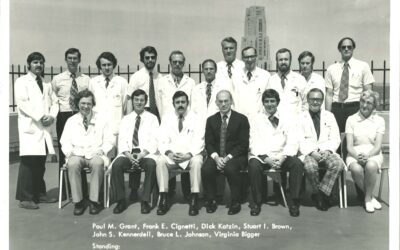
Richard A. Thoft, MD, became Department Chair until 1992.
The second YAG laser was installed at Eye & Ear.

The Eye & Ear Institute was founded in Oakland.
Indirect scope prototype developed by Dr. Thomas Friberg, who then taught a course at the AAO on its usage from 1990-1995.
Dr. Jay George Linn, Jr., MD, stepped down from the Eye & Ear Hospital after working there since 1947. Since 1986, he has been clinical professor emeritus at the University of Pittsburgh. He was a pioneer in ophthalmic microsurgery as well as corneal transplant surgery.
At the centennial of its founding, control of the Eye & Ear Hospital was taken over by the University of Pittsburgh Medical Center.
Gary N. Foulks, MD, became Department Chair until 2001.

Joel S. Schuman, MD, became Department Chair until 2016.
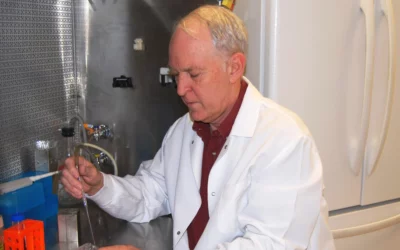
The Funderburgh Laboratory and collaborators in the Department of Ophthalmology found stem cells in the connective tissue of the adult cornea.
The Guerrilla Eye Service was created to help eliminate barriers to eye care.

Dr. Deepinder Dhaliwal founded the Center for Integrative Eye Care, the first of its kind in the nation.
The E. Ron Salvitti MD Chair in Ophthalmology was established.
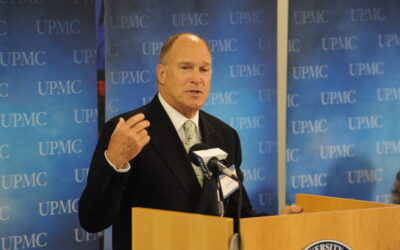
The Louis J. Fox Center for Vision Restoration was established as the first national, comprehensive, multi-disciplinary research and clinical program dedicated to ocular regenerative medicine.
The Funderburgh Laboratory and the Department of Ophthalmology confirmed that corneal stroma stem cells were able to reconstruct the microstructure of the corneal stroma and restore corneal transparency in a genetic mouse model of cornea scarring.
Using a mouse wound model with corneal opacity, the Funderburgh Laboratory and the Department of Ophthalmology found that human CSSCs prevent trauma-induced corneal scarring.
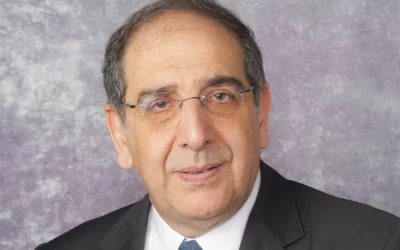
José Alain-Sahel, MD, became Department Chair.
During his predecessor’s tenure, the Department:
Grew to a high of 35 clinical faculty
Added seven service locations, in addition to the Eye & Ear Institute and Bethel Park
Created a pediatric ophthalmology service and brought it to national and international prominence
Added six full-time pediatric ophthalmologists (from zero)
Added three VR surgeons, two full-time faculty in glaucoma, two on cornea, one “plus” on neuro-ophthalmology, two comprehensive ophthalmologists and two optometrists; Introduced community service, especially in the form of outreach
Initiated fellowships in every major ophthalmic subspecialty
Created a funding program called OTERO Fellowships (ocular tissue engineering and regenerative ophthalmology)
The Jennifer Salvitti Davis Chair in Ophthalmology was established.
The University of Pittsburgh School of Medicine entered into an agreement with three world-renowned French research institutions: the University Pierre et Marie Curie of the Sorbonne Universités in Paris, the Institut National de la Santé et de la Recherche Médicale, and the Centre National de la Recherche Scientifique.
UPMC broke ground on the UPMC Vision and Rehabilitation Tower at UPMC Mercy.
The University of Pittsburgh received a $6 million grant from the Richard King Mellon Foundation to support the development of a cortical vision research program.
The Cornea Task Force was created to continue Dr. Jim Funderburgh’s legacy.
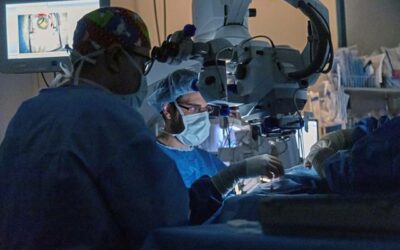
Astellas Pharma, Inc. and the University of Pittsburgh entered into a research collaboration agreement focused on the discovery and optimization of clinical candidates for the treatment of dry age-related macular degeneration utilizing the AAV-based gene therapy approach.
The position of Patient Navigator was created.
The Henry L. Hillman Foundation granted $20 million towards establishing a patient-centered program in Pittsburgh’s Uptown neighborhood to tackle all elements of vision loss.
Scientists from Paris, Pittsburgh, and Basel, Switzerland, reported the first-ever case of partial vision recovery in a blind patient after optogenetic therapy; the study was published in Nature Medicine.
José Alain-Sahel received the Breaking the Wall in Life Sciences 2021 Award for his groundbreaking work in restoring vision using optogenetics.
The Department of Ophthalmology began taking part in the annual Mission of Mercy event, providing free vision care as part of a two-day free health clinic.
The UPMC Eye Center became one of 14 ocular gene therapy treatment centers approved in the U.S. to offer LUXTURNA for retinal dystrophy.
Andrew Williams, MD, received the David Epstein Clinical-Scientist Award from the Chandler Grant Glaucoma Society, which is given in support of early physician-scientists in glaucoma.
In collaboration with the Department of Otolaryngology, the Department launched a PhD certificate program in Hearing and Visual Sciences to provide dedicated training for PhD students across the University of Pittsburgh.
ECM Therapeutics, a clinical stage regenerative medicine company pioneering the development of Extracellular Matrix-based therapeutics for the treatment of unmet medical needs, announced a collaboration with the Louis J. Fox Center for Vision Restoration at the Vision Institute. This collaboration will leverage a platform technology, called Matrix Bound Nanovesicles (MBV), that has recently shown potential to promote restoration of injured optic nerves, opening doors for clinical translation to treat various ocular pathologies.
The Department launched an Advance Practice Providers (APP) ophthalmology program to assist in providing care at the Urgent Eye Care Clinic (UECC) as well as inpatient consult teams at Presbyterian, and ultimately Shadyside.
Debasish Sinha, PhD, received the Edward N. & Della L. Thome Memorial Foundation Award for Age-Related Macular Degeneration Research.
Fifteen new clinical and research faculty members joined the Department.
José-Alain Sahel was honored to be nominated by French President Emmanuel Macrón to the Presidential Council for Science. He was also elected as a Fellow of the National Academy of Inventors.
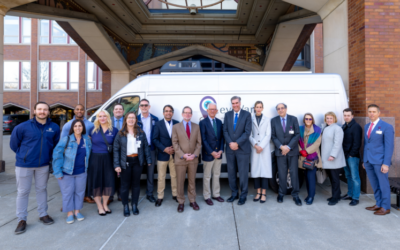
The Eye & Ear Foundation and UPMC Mercy received a $150,000 mobile “eyeVan” from Brother’s Brother Foundation for the Department of Ophthalmology to use for free community vision clinics in the Pittsburgh Region.
Dr. Sahel received the Corinne Kirchner Research Award from the American Foundation for the Blind.
Leah Byrne, PhD, received the 2023 University of Pittsburgh Office of Innovation Emerging Innovator Award.

The UPMC Vision Institute opened in the UPMC Mercy Pavilion on May 1.
Marlene Behrmann, PhD, was awarded the 2023 Howard Crosby Warren Medal from the Society of Experimental Psychologists (SEP) for her insightful studies elucidating the neural and behavioral functioning of higher-level vision, along with its development and potential for plasticity.
Dr. Sahel received the 2023 International Prize for Translational Neuroscience of the Gertrud Reemtsma Foundation, administered by the Max Planck Society, for outstanding achievements in basic neurological research.
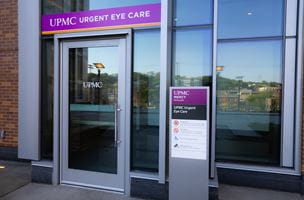
The Vision Institute opened an Urgent Care eye clinic, making it one of the few clinics in the country dedicated to the care of eye emergencies, one of only two in Pennsylvania, and the only one in the region.
Dr. Deepinder Dhaliwal was awarded the International Society of Refractive Surgery’s Founders’ Award for her extraordinary contributions to the growth and advancement of the Society and its mission.
EEF received a $5 million grant from the Henry L. Hillman Foundation to create a Center of Excellence for Patient-Centered Data Analysis, Clinical Research, and Innovative Methodologies for the Department of Ophthalmology.
Dr. Sahel received the prestigious Wolf Prize in Medicine together with his colleague Botond Roska, MD, PhD, of the Institute for Molecular and Clinical Ophthalmology Basel (IOB), for their work to restore sight using optogenetics, a research tool that uses light to control cell activity.
Dr. Sahel received the EURORDIS – Rare Disease Europe Scientific Award and the Macula Society Michaelson Award.

The University of Pittsburgh School of Medicine and the French National Institute of Health and Medical Research, Inserm, established an International Vision Institute, the first such partnership for Inserm. The lab, a five-year project, will be coordinated by Serge Picaud, Director of the Institut de la Vision in Paris and Dr. Sahel.

To make whole eye transplants that restore sight a reality, the Department became part of a project team for a program called Transplantation of Human Eye Allografts, or THEA, co-led by Dr. Sahel and Jeffrey Goldberg, MD, PhD, Chair of Ophthalmology at the Byers Eye Institute at Stanford University.
Xin Fan, PhD, was promoted to Research Assistant Professor. His research focuses on developing novel strategies for sustained and targeted ocular therapeutics for more effective and patient-friendly ocular treatments.
Xing Chen, PhD, Assistant Professor of Ophthalmology, received a National Institutes of Health (NIH) New Innovator Award from the NIH Common Fund’s High-Risk, High-Reward Research Program.

Dr. Gary N. Foulks, distinguished ophthalmologist and esteemed member of the medical community, passed away. Dr. Foulks served as Chairman of the Department of Ophthalmology at the University of Pittsburgh from 1995 until 2001.
Two new faculty members joined the Department:
Farzad Jamshidi, MD, PhD, Assistant Professor of Ophthalmology, who specializes in diseases of the retina and vitreous and sees patients with eye cancer involving the retina/choroid. He plans to establish a tumor service and study the evolution of choroidal nevi and retinal hemangioblastomas.
Silmara de Lima, PhD, Assistant Professor of Ophthalmology, who investigates axon regeneration in the optic nerve injury model. She plans to establish a strong foundation in the research of neuroprotection, regeneration, and myelination of RCGs using NF1-OPG in vitro and in vivo models.

First Annual Report released: https://issuu.com/eyeearfoundationofpittsburgh/docs/2024_department_of_ophthalmology_annual_report?fr=xKAE9_zU1NQ
Dr. Sahel was honored as a recipient of the Future Vision Foundation’s laureate award at its gala at the Cleveland Museum of Art. Watch the documentary about Dr. Sahel: https://vimeo.com/1071847314.
Dr. Sahel was named Executive Vice President of UPMC Enterprises and will serve as Chief of UPMC’s Health Technology Advancement Program (HTAP), a new initiative within UPMC Enterprises designed to capitalize on the innovative culture that exists across the entire organization. He was also named the 2025 recipient of the Proctor Medal from ARVO, the Association for Research in Vision and Ophthalmology, and named as a member of the Academia Europea, the pan-European Academy of Humanities, Letters, and Sciences.
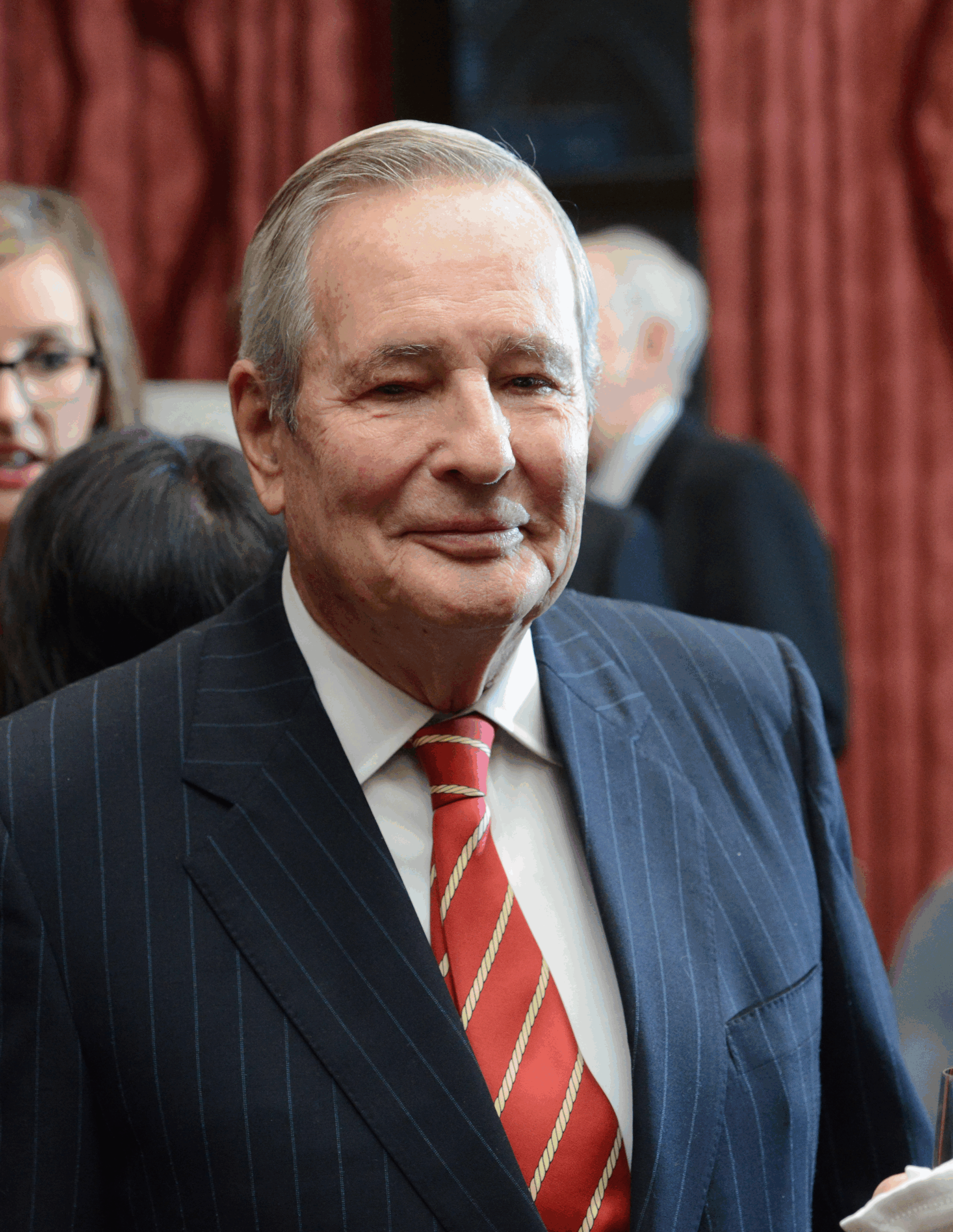
Albert C. Muse, a founding member of the Eye & Ear Foundation, passed away on May 16 at the age of 89. Read more: https://eyeandear.org/2025/05/in-memoriam-al-muse/

Andrew Williams, MD, was selected as a Pennsylvania Medical Society Top Physician Under 40.
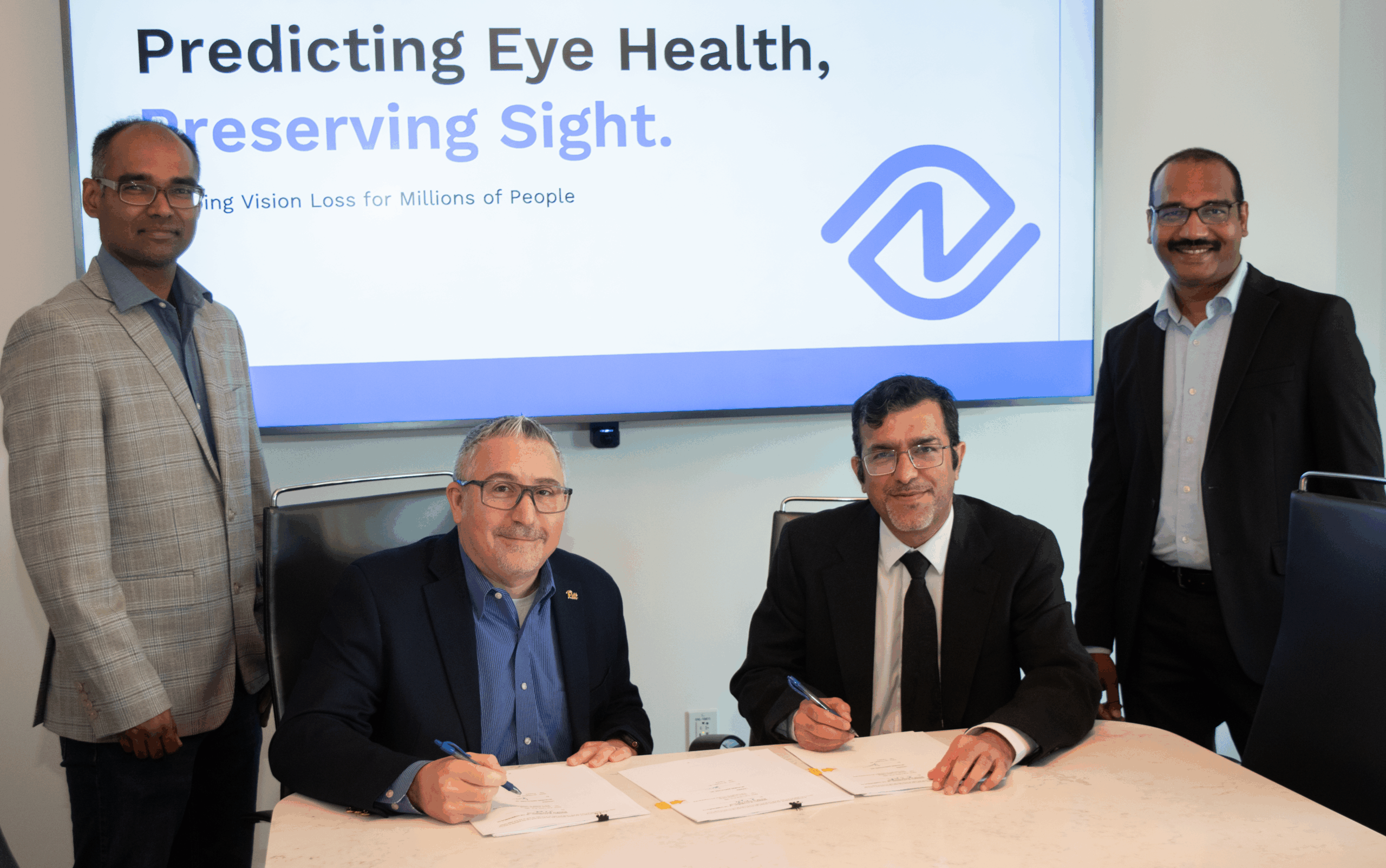
NetraMind Innovations — a company founded by four faculty members in the Department of Ophthalmology — signed with the University of Pittsburgh Innovation Institute, marking them as fully licensed and functional.